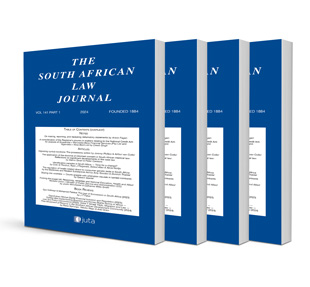Exploring the use of personal servitudes for renewable energy in South Africa: A common, irregular or novel idea?

ARTICLE
Exploring the use of personal servitudes for renewable energy in South Africa: A common, irregular or novel idea?
Author: Tina Kotze
ISSN: 1996-2177
Affiliations: Research and Didactics Lead: Law and Ethics, Boston City Campus; Research Associate, University of Pretoria
Source: South African Law Journal, Volume 142 Issue 3, p. 567-599
https://doi.org/10.47348/SALJ/v142/i3a7
Abstract
Securing rights on land is the first step in developing a renewable energy project. This article considers using and creating personal servitudes in favour of a private independent power producer to establish a renewable energy facility (‘REF’) in South Africa. In particular, the article considers three different categories of personal servitudes that could be used to secure land rights for the establishment and operation of a REF, namely (a) traditional common-law personal servitudes (specifically the usufruct), (b) irregular servitudes (servitutes irregulares), and (c) novel personal servitudes. The absence of a numerus clausus of real rights in the South African property-law context allows for the creation of novel limited real rights. In the renewable energy context, this means that entirely novel limited real rights in general, and more specifically a new category of servitude in particular, could in principle be created, provided that the right complies with (a) the requirements of s 63(1) of the Deeds Registries Act 47 of 1937, (b) the subtraction from the dominium test, (c) the general requirements of personal servitudes, and (d) other relevant legislative requirements, such as those provided for in the Subdivision of Agricultural Land Act 70 of 1970.